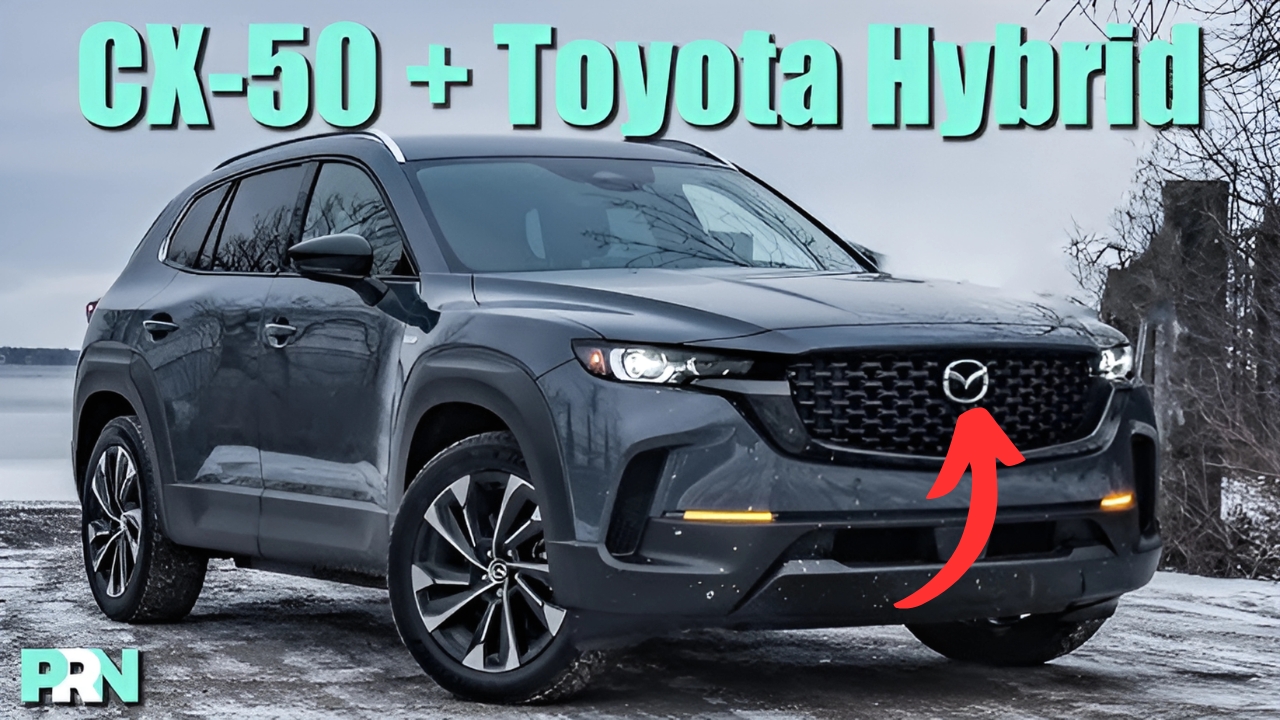The morning sun glints off Soul Red Crystal paintwork as the 2025 Mazda CX-50 Hybrid tackles a winding coastal road south of Sydney.
This newcomer to Australia’s increasingly crowded electrified SUV market brings Mazda’s distinctive driving philosophy to the hybrid segment, creating an intriguing alternative to established players that prioritize efficiency above all else.
Design Language Evolves
The CX-50 Hybrid maintains Mazda’s Kodo design philosophy while introducing subtle cues that distinguish it as part of the company’s electrified future. The signature front grille features a smoother, more aerodynamic appearance than its fully internal combustion siblings, with active shutters that adjust airflow based on cooling needs and speed.
Side profiles reveal muscular haunches and a slightly lower roofline than the CX-5, creating a more dynamic stance while maintaining practical interior dimensions. The distinctive character line rising from front wheel arch to tail lamp creates visual movement even when stationary, while gloss black cladding around wheel arches provides both protection and visual contrast.
At the rear, dual exhaust finishers integrated into a metallic lower valance maintain performance credentials while LED tail lamps wrap further around quarter panels than previous Mazda designs. The subtle “Hybrid” badging appears only on front fenders and tailgate, avoiding the ostentatious graphics some competitors employ to advertise their electrification.
Powertrain Sophistication
Under the sculpted bonnet lies Mazda’s most sophisticated powertrain to date for the Australian market. The system pairs a naturally-aspirated 2.5-litre four-cylinder Skyactiv-G engine with a 60kW electric motor integrated into the transmission housing. Total system output reaches 227kW with 420Nm of torque – figures that compare favorably with turbocharged competitors.
The hybrid system employs a distinctly Mazda approach, using electrification to enhance the engaging driving characteristics the brand values rather than focusing solely on efficiency metrics.
The electric motor provides immediate torque during initial acceleration, eliminating traditional naturally-aspirated engines’ low-end laziness without resorting to turbocharging’s occasional laggy response.
A lithium-ion battery pack mounted beneath the rear floor maintains the CX-50’s weight distribution while providing approximately 60 kilometers of electric-only driving in urban conditions. The regenerative braking system offers multiple intensity settings controlled via steering wheel paddles, though it stops short of the one-pedal driving some competitors offer.
Chassis Dynamics
Mazda’s engineers appear to have resisted the temptation to surrender handling prowess to the additional weight of electrification. The chassis demonstrates remarkable poise through challenging corners, with well-controlled body movements and communicative steering that maintains the driver connection Mazda prioritizes.
The suspension tuning receives Australia-specific calibration addressing local road conditions, with front MacPherson struts and rear multi-link architecture providing a balance between compliance and control. Adaptive dampers, standard on higher trim levels, offer additional bandwidth between comfort and sportiness depending on driving conditions and selected modes.
Braking performance addresses the common hybrid complaint of artificial pedal feel, with progressive response that builds naturally throughout pedal travel. The transition between regenerative and friction braking occurs nearly seamlessly – a significant improvement over earlier hybrid systems from various manufacturers.
Interior Environment
The cabin maintains Mazda’s premium aspirations with thoughtfully selected materials and ergonomic excellence. The dashboard design wraps around front occupants, with physical controls remaining for climate and core infotainment functions – a refreshing approach when some competitors relocate almost everything to touchscreens.
Seating surfaces feature recycled materials without sacrificing comfort or appearance, with primary touch points using traditional leather in higher specifications. The panoramic sunroof, newly available in this model, floods the interior with natural light while incorporating efficient solar control properties to reduce cooling requirements.
Technology integration shows restraint, with a 10.25-inch central display controlled primarily through a rotary commander that reduces driver distraction. The system now incorporates wireless smartphone connectivity and enhanced voice control covering more vehicle functions than previous generations.
Australian Market Context
For the Australian market, Mazda positions the CX-50 Hybrid as a premium alternative within the medium SUV segment. Three trim levels will be offered locally – Evolve, GT, and Asaki – with standardized hybrid powertrains across the range rather than making electrification an expensive option.
Pricing strategy places the CX-50 Hybrid between mainstream competitors and luxury European offerings, reflecting Mazda’s ongoing upmarket trajectory. The comprehensive equipment levels, even in base specifications, support this positioning with features that often require option packages from premium competitors.
Most significantly, the CX-50 Hybrid arrives as Australian buyer preferences continue evolving toward electrification without necessarily embracing full battery-electric vehicles. This middle-ground approach addresses practical ownership considerations including charging infrastructure limitations outside major population centers.
2025 Mazda CX-50 Hybrid
The 2025 Mazda CX-50 Hybrid demonstrates how electrification can enhance rather than dilute brand identity when thoughtfully implemented. By focusing on the driving experience rather than specification-sheet efficiency figures, Mazda has created a compelling option for buyers seeking reduced environmental impact without sacrificing engagement.
For the Australian market, where driving conditions range from urban congestion to remote outback journeys, this balanced approach to hybridization addresses practical realities while moving toward reduced emissions. As the automotive landscape continues evolving, the CX-50 Hybrid suggests Mazda will maintain its distinctive character throughout the electrification transition.
